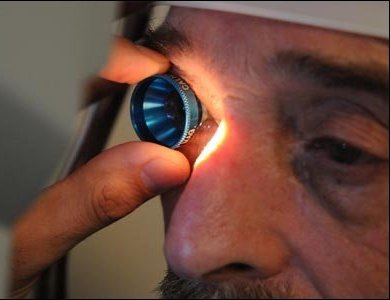ELDERLY VISION:
 As we age, our eyesight undergoes changes related to growing older just as our body does.Tissues are less elastic, muscles are weaker, metabolism of single cells is not as quick, blood circulation is slower with arterial and venous vases being stiffer and not as strong.
As we age, our eyesight undergoes changes related to growing older just as our body does.Tissues are less elastic, muscles are weaker, metabolism of single cells is not as quick, blood circulation is slower with arterial and venous vases being stiffer and not as strong.
Eyesight can remain perfect if all “ingredients” are kept under control at the highest level.
Normally three things are at risk of change.
The first and most popular problem concerns crystal transparency. Cataracts, or a loss of this transparency, are very common in old age but are also very simple to correct nowadays.
Senile macular deterioration is another frequent problem. This pathology which depends on the retina’s center is due to insufficient arterial-venous circulation. This means a more or less consistent loss of central vision and a pronounced difficulty in reading. Once this happens, it cannot be easily corrected, therefore it is very important to take precautionary measures.
Another common problem is an increase in ocular pressure, leading to narrowing of the field of vision until its extinction. All of the above problems can be kept under control through accurate check-ups at least once a year or more often where problems exist.
.
